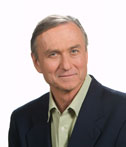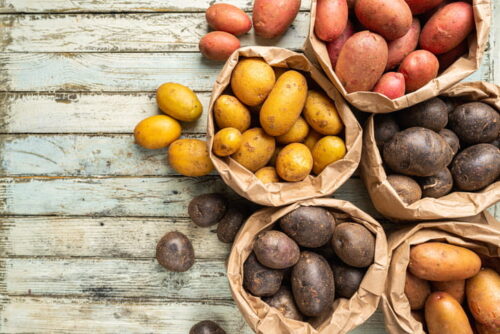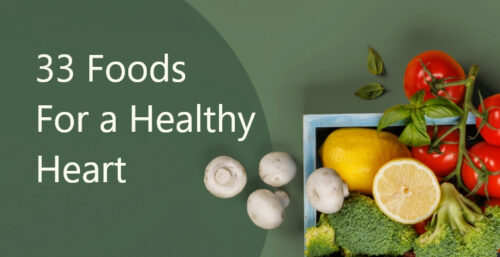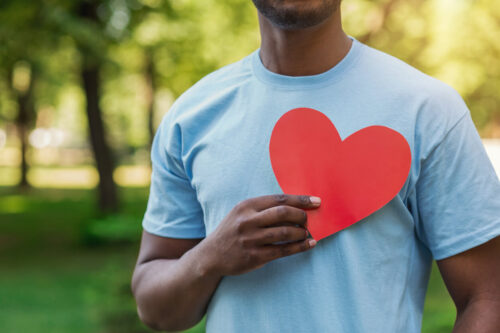The Fat Vegan

The Fat Vegan
You may consider this title an oxymoron—a figure of speech that combines two normally contradictory terms, but in real life this concurrence is all too common. You may also think the title is offensive. My intention is to help, not to provoke anger. People who have declared themselves ‘vegan,’ have said ‘no’ to eating all animal-derived foods. At extraordinary personal costs, many of these guardians labor tirelessly to protect the welfare of all animals. Fat vegans, however, have failed one important animal: themselves. Furthermore, their audiences of meat-eaters and animal-abusers may be so distracted by their appearance that they cannot hear the vital issues of animal rights and the environment; resulting in an unacknowledged setback for a fat vegan’s hard work for change.
I have a vested interest in helping vegans lose weight and become healthier. People living the vegan lifestyle have already embraced the most important tenet of the McDougall diet: consuming meat, poultry, fish, and dairy-products is at the root of heart disease, cancer, diabetes, arthritis, multiple sclerosis, and intestinal problems. Ours is a growing relationship. When I began my lifestyle-oriented medical practice as an internist in 1978, I was interested in dietary change only for the sake of my patients—I was unaware of animal rights and environmental issues. Over the years I have grown to understand that changing what humans eat is also essential for planet survival; meaning eliminating cruelty at the dinner table, and slowing climate change and pollution. People who believe in any or all of these issues must stand together; helping each other in order to make a difference in the future.
My first vegan experience was in 1977 in Honolulu, Hawaii. I was working as a resident doctor at Queens Medical Center training to become an internist. Jeff Lane, a young doctor, was my intern and a vegan for ethical reasons—he did not want to harm animals. Outward proof of his convictions was his nylon belt and plastic shoes. But there was one glaring inconsistency: Jeff was not the picture of good health. He was very overweight with greasy skin and acne. I soon discovered why Jeff’s health was so poor: most of his calories came from potato chips and Coke—items easily available to him in the hospital dining room, gift shop, and vending machines. He was the ultimate ‘junk food vegan.’ Yet, most vegans are very conscious of food quality and still many are overweight and unhealthy. What’s wrong with this picture?
Dietary Change Is Terrifying.
Almost all of us were raised on meat, poultry, seafood, milk, cheese, oils, flours, and sugars. These foods have provided all of our life-sustaining calories. To give these familiar foods up, in our minds, means starvation. This would be akin to asking us to stop breathing or go thirsty—unbearable, if not impossible, tasks. I remember well my first experience with foods different from those I was raised on. Mary, my wife of 37 years now, was pregnant with our first child, Heather, in 1974. We were living on the Big Island of Hawaii at that time. Buzz and Susan Hughes, a couple we met at our childbirth education class, invited us over for dinner. Susan prepared a wheat and barley casserole, a Caesar salad, vegetable side dishes, and a peach pie for dessert. The meal was tasty, but a drastic departure from my usual beef, chicken, cheese, egg, and ice cream menu. Even after second helpings my stomach was still empty of its customary fillings. On our drive home after dinner, I felt unsatisfied and actually believed that I would be unable to sleep through the night without ‘food.’ I entered the front door of our house, which led directly to the kitchen with a well-stocked refrigerator. I eagerly opened the bottom bin where the sliced turkey was kept and made myself a Dagwood sandwich. After eating sufficient amounts of fat, protein, flour, and sugar, I slept well.
Old Habits Doom Vegans
Fat vegans are as terrified as anyone else of giving up their familiar protein- and fat-centered diet. In their minds, this change would be akin to starvation. How could they overcome the fear and still transition to a vegan diet painlessly? By simply replacing real animal foods with non-animal foods, that look, feel, smell, and taste the same as the original. ‘What’s for dinner?’ Before, the answer was steak, fried chicken, pork chops or cheese pizza. Now, as a vegan, the response is ‘soy burgers, faux meatballs, meat substitute cold cuts, soya chicken chunks, soy hotdogs, soy mozzarella pizza, and mockduck (made with seitan).’ Instead of animal fats and proteins, fuel becomes vegetable oils and isolated soy proteins. Olive oil and Earth Balance spread replace lard and butter. Glassfuls of Elsie the cow’s milk become soymilk. For dessert: a ‘dairy-free decadent indulgence (ice cream)’ and soy yogurt. Vegetables remain insignificant side dishes, glistening with droplets of oil.
Calorie for calorie, in terms of nutrition, the fake food is no better, and in some ways worse, than the ‘real thing.’ Isolated soy protein causes greater calcium loss, leading to osteoporosis and kidney stones, and also produces greater increases in growth factors (IGF-1) that promote cancer and aging, than does isolated cow’s milk protein. ‘The fat you eat is the fat you wear’—olive oil and Earth Balance spreads are just as unattractively worn on the thighs, hips, and buttocks, as are lard and butter. Vegetable oils are often more cancer promoting than are animal fats.
Do You Really Want the Same Food?
In 1986 I started planning for my first live-in program at St. Helena Hospital in the upper Napa Valley in Northern California. This community is largely made up of people of the Seventh Day Adventist faith. Their church is known for supporting vegetarian diets. Naturally, I asked the local people where to eat. They recommended the A&W restaurant on main street, Highway 29, on the west side of St. Helena. That evening I ordered their famous ‘veggie burger.’ My first bite told me a serious mistake was made. I complained to the man behind the counter, ‘I ordered the veggie burger and you gave me a beef hamburger.’ His response, ‘Thanks for the compliment—our veggie burger tastes so real.’ I threw the burger in the trash and walked out. It was disgusting—A burger so greasy and beef-flavored, that I expected to find chunks of bone and blood vessels.
The Natural Human (Near) Vegan, Starch-based Diet
Fortunately, there is one single big solution that will revitalize people, cut food and health care costs, protect animals, and reduce environmental pollution, overnight: reestablishing the natural human diet of starches. My battle to spread this message relies on those people most ripe for change: especially vegans of all shapes and sizes. The switch is a simple one: rather than getting calories, like all other Americans and Westerners—and most vegans—now do, from fat and protein, the primary fuel becomes carbohydrate from starches. Rather then starvation, this change means fuller satisfaction and radiant health. The more you eat the trimmer and healthier you become. All large populations of active, healthy people, throughout written human history, have obtained the bulk of their calories from starch. Examples of people once thriving on common starches include Japanese and Chinese in Asia eating sweet potatoes, buckwheat, and/or rice, Incas in South America eating potatoes, Mayans and Aztecs in Central America eating corn, and Egyptians in the Middle East eating wheat. Men following diets based on grains, vegetables, and fruits have accomplished all of the great feats in history. The ancient conquerors of Europe and Asia, including the armies of Alexander the Great (356 – 323 BC) and Genghis Kahn (1167 – 1227 AD) consumed starch-based diets. Caesar’s legions complained when they had too much meat in their diet and preferred to do their fighting on grains.
You Are What You Eat: The Low-fat Vegan
At every step of recipe design and food preparation, starches replace fake meats and dairy products manufactured from soy, seitan, sugar, salt, artificial flavorings and other chemicals. Oils, even the ‘healthy ones,’ are banned.
- Bean and grain burgers replace Boca Burgers.
- Add rice to your bean chili instead of Gimme Lean.
- Oatmeal for breakfast rather than greasy sausages and breakfast links.
- Olive oil is substituted with low-fat salad dressings.
- Leave the soy cheese off the whole wheat pizza.
- Replace oils in baking with fat replacers like ‘Lighter Bake,’ prune puree, or applesauce.
- Just leave the oils out of the recipe whenever possible.
- Have fruits for dessert.
- Finally, for faster, greater weight loss minimize the use of all processed plant foods, which means simple sugars and flours.
There is really no excuse for not making this big change. Even my intern, Jeff Lane, had alternatives while working a 100-hour week in the hospital. The dining room served oatmeal and cold grain cereals with fruit juice for breakfast. For lunch and dinner Jeff could have chosen salads with vinegar or salsa, rice, potatoes, sweet potatoes, corn, beans, low-fat vegetable soups, vegetables, and fruit. The end result would have been—with a little basic knowledge and minimal effort—he, as an influential doctor, could have been an extraordinary crusader.
Vegans Are Ripe For Change
Being vegan says to me this is a person with outstanding character. Vegans are self-sacrificing and committed to making a difference. When everyone else is certain that it is our God-given right to mistreat and kill cows, pigs, chickens, and fishes in order to be properly nourished; a vegan would rather risk protein and calcium deficiency than to harm these beautiful creatures. Of course, this deep sacrifice ends with the discovery that plants provide all needed proteins, amino acids, essential fats, vitamins, and minerals (including calcium) without the inherent risks of flesh and dairy. Vegans are self-confident. They remain steadfast even when mom, dad, dietitian, and doctor are visibly angered by their religion of ‘veganism.’ Vegans are industrious. To avoid eating animals in a world where beef, chicken, and cheese are mixed in with everything in the market and on the menu is a daily struggle. Reading labels, turning down invitations to dinner, and occasionally, going hungry, require more effort than the average person is willing to muster.
Obviously vegans are exceptional people. With this one simple shift to a starch-based diet the word ‘vegan’ will become synonymous with terms like healthy, trim, active, young, strong, and energetic, and finally the most important adjective, earth-changing.
Recommended Articles

How to Cook Potatoes

33 Foods For a Healthy Heart






